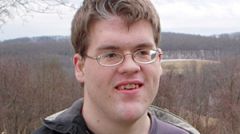![]()
![]()
![]()
Use LEFT and RIGHT arrow keys to navigate between flashcards;
Use UP and DOWN arrow keys to flip the card;
H to show hint;
A reads text to speech;
26 Cards in this Set
- Front
- Back
|
Prevalence of sleep disorders in children? |
Nightly - 12% Occasionally - 76% |
|
|
Populations that are at higher risk of sleep disorders? (6) |
1. Down syndrome 2. Neuromuscular disease 3. Craniofacial abnormalities 4. Intracranial tumors 5. Epilepsy 6. Developmental delay |
|
|
How does sleep affect children? |
Direct association of cognitive deficits and shortened life span 2. Total sleep time directly correlates with high academic achievement and enjoyment, infrequent illness, and decreased absenteeism |
|
|
Sleep relation to epilepsy? (4) |
1. Sleep is generally considered an activating state for seizure activity 2. Higher rate of sleep-disordered breathing, estimated at more than 40% in children with epilepsy 3. AEDs tend to cause weight gain, increasing risk for OSA 4. Both central and obstructive sleep apnea are more frequent; however, it is unclear whether central sleep apnea leads to seizures or vice versa |
|
|
Seizures related to sleep |
1. Paroxysmal arousals 2. Nocturnal paroxysmal dystonia 3. Episodic nocturnal wandering |
|
|
EEG of Landau-Kleffner syndrome? |
Continuous spike-and-wave activity in non REM sleep but absent in REM sleep and in the awake state (electrical status epilepticus in slow-wave sleep) |
|
|
Normal sleep behaviours not covered earlier that often leads to referral (4) |
1. Benign sleep myoclonus of infancy - myoclonus in an otherwise healthy infant with normal EEG 2. Nocturnal psychogenic nonepileptic seizures - episodes of bizarre norhythmic movements arising out of wakefulness even though they appear during sleep without an EEG accompaniment 3. Sandifer syndrome - Nocturnal arousal with posturing and stiffening; often due to GERD at ages 2 months to 5 years 4. Jactatio capitus (head banging) - Headbaning, along with body rocking, that occurs in wakefulness or during sleep (typical in autistic children) |
|
|
Sleep-disordered breathing in children with neuromuscular disease can be due to (2) |
1. Anatomical anomalies (e.g., craniofacial abnormalities) 2. Disturbance in physiologic function of neuromuscular control |
|
|
Test that is useful for determining whether the child has an associated sleep disorder and whether further testing and treatment should be done?
|
Pulmonary function test; usually restrictive pattern and vital capacity less than 60% predicted |
|
|
Next step when ___ falls below __%? |
FEV1; 40%; arterial blood gas: PaCO2 of 45mm Hg or more was a sensitive and more specific test than FEV1; next step is PSG if 45 mm Hg or more |
|
|
Strongest predictor of the onset of sleep-disordered breathing? |
Inspiratory vital capacity of less than 60% |
|
|
Strongest predictor for nocturnal hypercapnic hypoventilation? |
Inspiratory vital capacity of less than 40% |
|
|
Severely disrupted sleep-wake pattern may be what syndrome? |
Smith-Magenis; congenital disorder characterized by an inverted pattern of melatonin secretion |
|
|
Facial features of Smith-Magenis syndrome? |

1. Brachycephaly 2. Down-slanting palpebral dissures 3. Flat midface 4. Down-turned mouth |
|
|
Smith-Magenis syndrome progression (4) |
1. Easy-going and excellent sleeper 2. By age 1-2 complaints of frequent night awakenings and daytime naps 3. By childhood, aggressive behaviours, temper tantrums and self-injurious behaviours 4. Global developmental delay early |
|
|
Characteristics of Angelman syndrome (5) |
(Happy puppet syndrome) 1. Problems with sleep maintenance and seizures 2. Balance problems 3. Wide-based gait 4. Puppet-like hand movements 5. Cheery disposition |
|
|
Characteristics of Prader-Willi syndrome? (5) |
1. Hyperphagia 2. Obesity 3. Hypogonadism 4. Mental retardation 5. Excessive daytime sleepiness |
|
|
Early severe insomnia, seizures and aggressive behaviours? |
MPS III (Sanfilippo syndrome) |
|
|
Genetic disorders with associated sleep disturbances? (7) |
1. Autism spectrum disorders 2. Prader-Willi and Angelman 3. Mucopolysaccharidoses 4. ADHD 5. Rett syndrome 6. Down syndrome 7. Chiari malformation |
|
|
Pathognomic breathing disorder of Rett syndrome |
While awake periods of hyperventilation followed by apneas, but do not have musch sleep-disordered breathing at night |
|
|
Sleep disturbances in Rett syndrome? (5) |
1. Laughter 2. Seizures 3. Bruxism 4. Nighttime screaming 5. Frequent daytime napping |
|
|
Course of Rett syndrome |
Girl with normal development for 1-2 years, start walking and begins to talk, over time parents notice hand flapping or wringin movements, and the child will lose the speech ability |
|
|
Hallmarks of Rett syndrome? |
It is considered a neurodegenerative disease 1. Microcephaly 2. Loss of purposeful hand function 3. Seizures that are difficult to control |
|
|
Why are Down syndrome patients at increased risk of sleep breathing disorder? |
Posteriorly placed tongue, small nose, and absent frontal and sphenoid sinuses form a relatively crowded oropharyngeal airway |
|
|
How common is OSA in patients with Down syndrome? |
Common enough that some experts recommend PSG after the age of 3 years in all children with this diagnosis |
|
|
Role of MRI in chiari malformation? |
MRI of the craniocervical junction in both flexion and extension can aid in treatment guidance by providing dynamic imaging |

